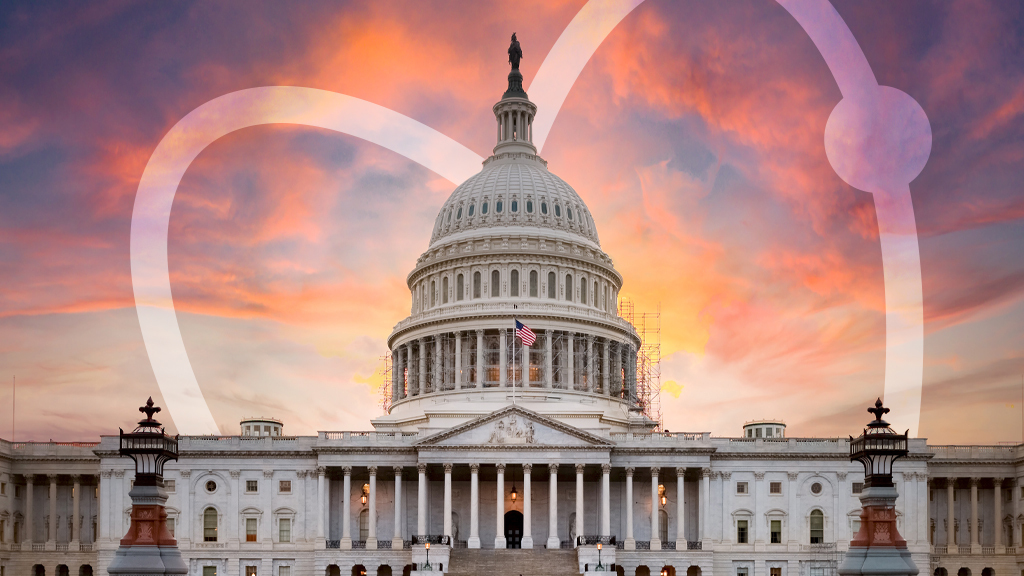NSTA Legislative Update
Oversight of Federal Education Programs Moving from ED to Dept. of Labor
By NSTA Legislative Affairs & Advocacy Team
Posted on 2025-11-19

Disclaimer: The views expressed in this blog post are those of the author(s) and do not necessarily reflect the official position of the National Science Teaching Association (NSTA).
On November 18, the U.S. Department of Education (ED) announced a set of six new interagency agreements that would shift the administration of many of its largest K–12 and postsecondary programs to the Departments of Labor, Interior, Health and Human Services, and State.
Under the auspices of an Interagency Agreement (IAA) framework, oversight of federal education K-12 programs will be moving from the ED to the Department of Labor (DOL) under a newly-created Elementary and Secondary Education Partnership. DOL will now manage competitions, provide technical assistance, and integrate ED’s programs with the employment and training programs DOL already administers. The new Elementary and Secondary Education Partnership will work to “ensure these programs are better aligned with workforce and college programs to set students up for success at every part of their education journey.”
DOL will be administering the federal ESSA K-12 programs listed below:
- Title I, Part A: Improving Basic Programs Operated by Local Educational Agencies
- Title I, Part B: Improving Academic Achievement of the Disadvantaged—State Assessment Grants
- Title I, Part C: Education of Migratory Children
- Title I, Part D: Prevention and Intervention Programs for Children and Youth Who are Neglected, Delinquent or At-Risk
- Title II, Part A: Supporting Effective Instruction State Grants
- Title III, Part A: English Language Acquisition State Grants
- Title IV, Part A, Student Support and Academic Enrichment (SSAE)
- Title IV, Part B 21st Century Community Learning Centers
- Title V Small, Rural School Achievement and Rural and Low-Income School Programs
- Impact Aid
- Education for Homeless Children and Youths
DOL will also take on a greater role in overseeing several ED competitions, including the Teacher and School Leader Incentive program and the Teacher Quality Partnership Grant.
States will continue to receive all title formula funds from the programs listed above, but will now receive the funds from DOL. ED and DOL experts will collaborate to enhance programs that improve education outcomes for our nation’s students and foster a stronger workforce.
"The Trump Administration is taking bold action to break up the federal education bureaucracy and return education to the states,” said U.S. Secretary of Education Linda McMahon. “Cutting through layers of red tape in Washington is one essential piece of our final mission. As we partner with these agencies to improve federal programs, we will continue to gather best practices in each state through our 50-state tour, empower local leaders in K-12 education, restore excellence to higher education, and work with Congress to codify these reforms. Together, we will refocus education on students, families, and schools – ensuring federal taxpayer spending is supporting a world-class education system.”
Read the Fact Sheet about the Partnership for Elementary and Secondary Education here.
Remember that, under current law, Congress, not the Administration, will decide the future of most of these federal education programs. They are currently working on FY26 funding since the current Continuing Resolution will end on January 26, 2026 (see story below).
Congress Reaches Agreement on FY26 Continuing Resolution, So What’s Next?
The 40-day government shutdown officially ended on Wednesday, November 12, after President Trump signed the bill to fund the FY 2026 Continuing Resolution (CR). The funding bill was passed by the Senate in a 60-40 vote, with eight Democrats joining Republicans, and then cleared the House by a 222-209 margin. The measure extends funding for most agencies through January 30, 2026.
Congress will need to act on the Labor, Health and Human Services and Education spending bill before Jan. 30 or risk another shutdown. Advocates, including NSTA, are urging Congress to adopt the bipartisan Senate bill, which provides level funding for most programs (see below).
Here are the major programs that can be used to fund science and STEM in the Senate Labor-HHS-ED FY26 spending bill:
- Student Support and Academic Enrichment Grants (ESSA Title IV.A) -- $1.38 billion. This program is the major science and STEM education funding source for states and districts under ESSA.
- Supporting Effective Instruction Grants (ESSA Title II.A) -- $2.2 billion program. This program enables districts to provide high-quality professional development for teachers.
- 21st Century Community Learning Centers (ESSA Title IV.B) -- $1.329 billion. This program funds quality science and STEM programming in after-school and summer learning programs.
- Teacher Quality Partnership Grants -- $70 million. These funds can be used for teacher training in AI.
Stay tuned.
For the latest advocacy and policy updates, be sure to check out our Legislative Updates blog series, which is featured in our e-newsletters, NSTA Reports, and NSTA Weekly. You can also access the articles directly on the NSTA Blog.
The mission of NSTA is to transform science education to benefit all through professional learning, partnerships, and advocacy.


